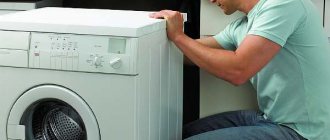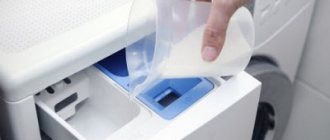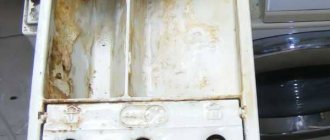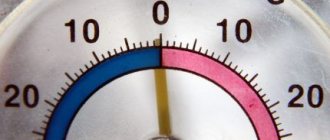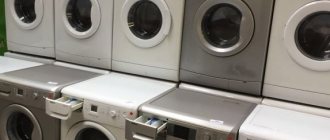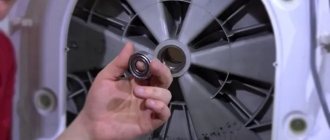For people who do not have in-depth knowledge of electrical engineering, the term residual current device (RCD) will not say anything specific. And many houses and apartments still do not have such a device. Although it is definitely worth installing in rooms with a large number of electrical appliances (for example, a kitchen or bathroom).
This device is designed to protect people and electrical equipment from accidental electric shock or leakage of electric current.
It is also possible to install a differential automatic machine (difavtomat) instead of an RCD. The general principle of operation of the difavtomat is similar to a residual current device, but has several additional functions: protection not only against current leakage, but also against short circuits and overloads in the electrical network. An automatic switch is also installed in its design.
Externally, it looks like a small plastic box with a toggle switch and several holes for connecting electrical wires. But the apparent simplicity of the design has no analogues.
The operating principle of the RCD is quite simple. The device constantly “compares” the current going to electrical appliances with the current coming from them, and if a difference occurs, it automatically turns off the power grid. But there are still drawbacks to this design. If, during an electric shock to a person, the current does not leave the closed circuit (is not grounded), the RCD does not trip because it “does not see” the voltage leak.
Rules for choosing ouzo
The most frequently asked question when installing and connecting washing machines: is it necessary to install an RCD for a washing machine? The answer is simple - yes, it is necessary. After all, the washing machine itself is a fairly energy-consuming device, and also operates in an environment with high humidity, due to which it belongs to the category of increased danger. That is why the installation of an RCD is necessary when connecting washing machines to the power supply network.
In order for the washing machine to serve for many years, and its operation to be safe, it is important to choose the right residual current device. To do this, you must follow the following rules:
- Device power. The choice of RCD for a washing machine based on power is based on the rated power of the electrical network. There are single-phase and three-phase devices.
- Mains voltage. Single-phase RCDs are designed for 220 V, and three-phase RCDs are designed for 380 V.
- Current strength. The most common RCDs, which are recommended by experts, have 30 mA protection. It can be set to 10 mA, but a similar degree of protection is not required for household electrical equipment.
- Design features of the RCD. Since the washing machine has a high level of power consumption, it is better to choose a class A residual current device. It is also possible to install class AC, but this type does not always perform its function well.
- Features of the release and marking of the machine. An RCD marked “C” is suitable for the electrical network in an apartment or private house. There are also devices with digital markings; in this case, the correct choice would be a device with a C16 marker or, more rarely, a C25.
- Additional levels of protection. Some RCD models do not have a protection system in case of a break in the neutral conductor, which leads to the device ignoring current leaks.
Installation rules
To correctly select and install a difavtomat, you should take into account some characteristics:
- network power,
- rated voltage value,
- rating of the automatic device and some features of the release,
- distinctive features of RCD,
- additional protective measures,
- rated current value.
We have determined what kind of RCD is needed. Now all that remains is to figure out how to install it. The process itself does not cause any difficulties. It is necessary to extend VVG wiring from the distribution board with a cross-section of 3 to 2.5. We install the RCD in a special protective housing in close proximity to the outlet.
After this, the following actions are carried out:
- the indicator device determines the position of the neutral wire and phase,
- the wiring is connected to the RCD,
- The phase and “zero” are output through the body of the device, and the connection is made to a moisture-resistant outlet.
This option for connecting a protective device is considered the easiest. But when, in addition to the washing unit, the network implies the presence of several additional consumers, it is recommended to install a device for protective de-energization. This measure will help ensure uninterrupted operation even if several consumers fail.
Purchasing an RCD will protect electrical appliances and control units from unexpected breakdowns. Voltage fluctuations can cause a fire in the control unit of the washing unit, or damage the pump or drainage system.
Installation work will not take much of your time. But if you don’t understand anything about electricity, then it would be better to turn to a professional for help.
Uzo connection
It is better to entrust connecting the washing machine to a specialist electrician, however, if you have basic knowledge in the electrical installation industry, you can complete this task yourself without much difficulty. The washing machine must be connected to the electrical network via an RCD in compliance with safety rules, comply with all requirements and take into account the technical characteristics of both the washing machine and the electrical wiring.
- Power, cross-section and wiring markings. The most common power of washing machines is from 2 to 2.5 kW. The meaning of this characteristic is written in the documents for the washing machine or on the back wall of the machine itself. Based on its power, you can choose the wiring of the correct cross-section. If the socket for the washing machine is powered by a two-core, especially aluminum, wire, it is necessary to replace the electrical wiring with a three-core copper cable. In this case, it is better to take a wire with a cross section of 2.5 square meters. mm, because this outlet will also plug in other electrical appliances, for example, an electric razor or a hair dryer.
Grounding of electrical appliances. Since washing machines are most often installed in the bathroom, they are equipped with a maximum protection system against electric shock - protection class 1. This means that the device is equipped with a grounding system that is built into the power plug.- Socket. Taking into account the presence of a grounding system in the plug of electrical appliances, it is better to choose a socket with an appropriate contact, the so-called “Euro” socket. If the outlet will be installed directly in the bathroom, it is better to give preference to a model with an increased degree of protection. Such models are designed for use in rooms with high humidity.
It is strongly recommended not to use a variety of extension cords and tees, since their reliability is not always at a high level. Such devices may not always provide a high-quality connection to the grounding contact or withstand high loads.
Why is an extension cord prohibited?
In modern apartments there are practically no problems with connecting washing machines to the electrical network. Developers carefully consider the layout of bathrooms, providing several waterproof outlets for convenient and safe installation of household appliances. But in “old” houses, communications are not so well established: access to power is standard or even located far away, in the corridor or room. If there is no way to rebuild the room, the only option left is to throw in an extension cord.
The scheme is simple: go to the nearest hardware store, buy the first extension cord you come across and turn on the washing machine through it. There is only one problem - doing this is strictly prohibited. This item is specified in each factory manual.
Connecting through an extension cord is considered dangerous for several reasons:
- Often an extension cord that is not suitable for power is purchased, or rather, it is too “weak” for the equipment;
- a energized “carrying device” lies on the threshold, next to the washing machine or in the corridor and, if exposed to water or touched, can give an electric shock;
- the cord connected to the socket under the door often frays, gets crushed and bent, the insulation is damaged, the wires are exposed and pose a threat to the life and health of the residents;
- Unknowingly, other devices are connected to the extension cord at the same time, which overstresses the network and results in an emergency power outage;
- Constant use of plugs of different types, especially pins that do not match in size, loosens the extension cord and does not provide a full current supply.
You can't joke with electricity. The human heart “works” from electrical impulses, and even a small surge in voltage from the outside will lead to malfunctions of the cardiovascular system. We must not forget about the fire hazard - damaged insulation and exposed wires can lead to a fire in equipment with further consequences.
Manufacturers of washing machines warn users and provide instructions for connecting the equipment to the electrical network. These include the supply of direct current of a certain power with grounding and protection from moisture. In most cases, the extension cord does not have such characteristics.
Connection diagram of the washing machine to the power supply system
For a washing machine, it would be better to install wiring that is powered directly from the electrical distribution panel. The RCD is installed in a place convenient for use, but preferably outside the bathroom. The socket is connected to the power supply only after a residual current device.
What not to do when connecting a washing machine:
- Close the body of the washing machine with metal water pipes or the heating system (in other words, do not ground it);
- Close the grounding and neutral contacts in the socket - this will trigger the RCD.
Reasons for triggering the ouzo
It is not often that the RCD trips when the washing machine is turned on, but it still happens sometimes. And in this case, you should not immediately call a specialist. You should first try to independently determine the reason for the operation of the protective device, and then decide what to do next.
There are a large number of reasons why an RCD is triggered, the most common of them are listed below:
- The residual current device is not selected correctly. If the RCD was selected without taking into account the characteristics of the washing machine, and its energy intensity is lower than necessary, then it will immediately turn off, perceiving the inclusion of more powerful equipment as a network overload;
- Problems with electrical wiring. Old or unsuitable electrical wiring may not be able to withstand the load, which can also lead to the machine tripping (in this situation, the RCD protects old or weak wiring from fire);
- Electricity leakage onto the equipment body. In this situation, if the neutral wire is connected to the housing and additional grounding is created, the protective device automatically turns off;
- A malfunction of the heating element, electric motor or surge protector, or shorted contacts and buttons can also trigger the RCD. In this situation, in the absence of knowledge in the field of electrical engineering, it is better to turn to specialists.
How does an RCD machine work?
The well-being of household appliances in our homes often depends on worn-out electrical substations that are not designed for heavy loads. One power surge is enough to lose all electrically powered devices in one fell swoop. To save washing equipment from the vagaries of electrical networks, it is provided with a separate RCD. It consists of:
- housings;
- transformer;
- chain breaking mechanism;
- self-diagnosis mechanism;
- electromagnetic cut-off - it is available in the latest generation models.
Triggering occurs at critical loads, the machine, opening the circuit, stops the flow of electric current - people and equipment are safe.
A dangerous situation will occur, for example, if a person touches exposed wires or if water gets on him. The automation, when activated, prevents electric shock and damage to expensive equipment. The sensor can be triggered many times and, unlike fuses, does not need to be changed.
Calculation of the current characteristics of the difavtomat
The automatic device on the washing machine will protect against both short circuit and breakdown to the body at the same time. Which type of automatic machine to install on the washing machine depends on its characteristics, the state of insulation of the conductors, location and operating conditions. Typically its power ranges from 1500-2500 W. If leakage currents (Ilt) are not indicated, then when choosing, you need to focus on the rules for electrical installations.
According to them, Iut of the device is calculated as the product of 0.4 mA by a number equal to the load current of the device. The latter is calculated by dividing the power of the device in watts by the network voltage in volts.
For example, the power of a washing machine is 2.5 kW. Then the load is 2500/220 = 11.37 Amperes. Iout of the device will be equal to 0.4x11.37=4.548 mA. If the differential circuit breaker is located in an electrical panel, far from the washing machine, then you need to take into account the leakage current of the phase wire from it to the device. It is equal to 0.01xL, where L is the length of the phase wire from the residual current device to the protected equipment.
The rules determine that the shutdown current (IΔn) of the RCD must exceed the total Iut of the protected line by at least three times. Therefore, with a cable length of 20 m and a load of 11.37 A, we end up with:
IΔn=3*(0.4xI +0.01xL)=3(0.4x11.37+0.01x20)=14.244 mA.
The closest in parameters in the range of manufactured difavtomats has an IΔn equal to 30 mA, and this is what you need to choose. The circuit breaker against short circuits and overvoltages is determined based on the load. Since in this case it is equal to 11.37 A, the closest one from the top in the range of automatic machines will have a rating of 16 A.
What to look for when choosing?
There are different extension cords in stores: with one, two sockets in a block or more, with or without an “On/Off” button, equipped with a voltage indicator and not. There are also models with a residual current device and grounding - they are considered the safest.
Since there is a possibility of leakage when the washing machine is operating, this means that water can get on the conductive parts of the extension cord. This increases the requirements for the device.
When choosing an electrical extension cord to connect an automatic machine, you should pay attention to the following characteristics:
- cable length, material of manufacture, core cross-section;
- number of sockets in the block;
- equipped with a grounding wire;
- the presence of a device that protects against short circuits in the network.
For example, if the washing machine consumes 2.5 kW, then the current indicator at a mains voltage of 220 Volts will be 11.4 A. Therefore, you will need a wire that can withstand a current of 16 Amps. This corresponds to a copper cable cross-section of 1.5 mm². The length of the cord should be from 3 to 7 meters.
The washing machine puts a serious load on the electrical extension cord, so you should not buy a device with several outlets. The ideal option is a block with one connector
It is important that there is a grounding wire, it is easy to find, it is colored yellow-green
Since the extension cord is usually used in bathrooms, which are areas with high humidity, it must meet IP20 protection against moisture and dust, as well as IP44, indicating that the device is insensitive to splashes.
It is imperative that the extension cord be equipped with fuses that protect against short circuits in the electrical circuit. This is necessary so that in the event of power surges, the device can absorb and neutralize the current surges.
The cost of an extension cord with grounding and a residual current device will be twice as high as the price of a model without these additions. However, in this case it is not worth saving - not only the safety of expensive equipment is at stake, but also the safety of your family.
Selecting a difavtomat letter
When the washing machine starts, the starting current increases several times compared to the rated current. The difavtomat should turn off, but if you select it correctly, this does not happen. To understand the process, you need to analyze the time-current characteristic of the difavtomat. From it you can determine the speed and operating time of the electromagnetic release.
Protection devices are divided into three categories, according to which it is possible to determine how many times the electric current must be greater than the rated current in order for the machine to operate at lightning speed. This is what the lettering on the automatic machine says:
B16 means that it reacts instantly when the nominal value is exceeded by 3-5 times (48-80 A);- C16 means that the excess is 5-10 nominal (80-160 A);
- D16, respectively, 10-20 ratings (160-320 A).
It follows that in order to avoid false positives, it is better to use a difavtomat with the letter C, in this case C16 with Iut 30 mA.
In addition, there is such a characteristic as the rated breaking capacity. This is the maximum short circuit current that the automatic circuit breaker can turn off without loss of functionality. In new houses it is recommended to use circuit breakers with a value of 6000 A, in rural houses with old wiring 4500 A.
Subtypes of machine energy consumption
Based on the information provided, they are guided by estimating the efficiency of the unit. You can obtain information by reading the corresponding markings located on the body of the unit. Europe invented 7 levels of energy consumption, marked with Latin letters: A; IN; WITH; D; E; F; G. Plus is added to units whose skills exceed the standard limits.
- Installations A are extremely economical; equipment of subtype A requires 0.17 - 0.19 kWh.
- The consumption of a class B washing machine varies between 0.19 - 0.23 kWh.
- Type C devices consume slightly more resources, 0.23 – 0.27 kWh.
- Household appliances of subtype D are classified as economical category; the level of “fence” varies between 0.27 – 0.31 kWh.
- Devices demonstrating E-F indicators are characterized by increased demands, the consumption level is 0.31–0.35 kWh, 0.35–0.39 kWh, respectively.
- Let's call class G devices uneconomical; they are capable of using more than 0.39 kWh, which is extremely high and unjustifiable.
- The antipode, the complete opposite, is the technology of category A+. “Occupies” less than 0.17 kWh, ensuring product competitiveness.
How much a washing machine consumes is determined by laboratory tests, and the equipment is assigned the appropriate level.
